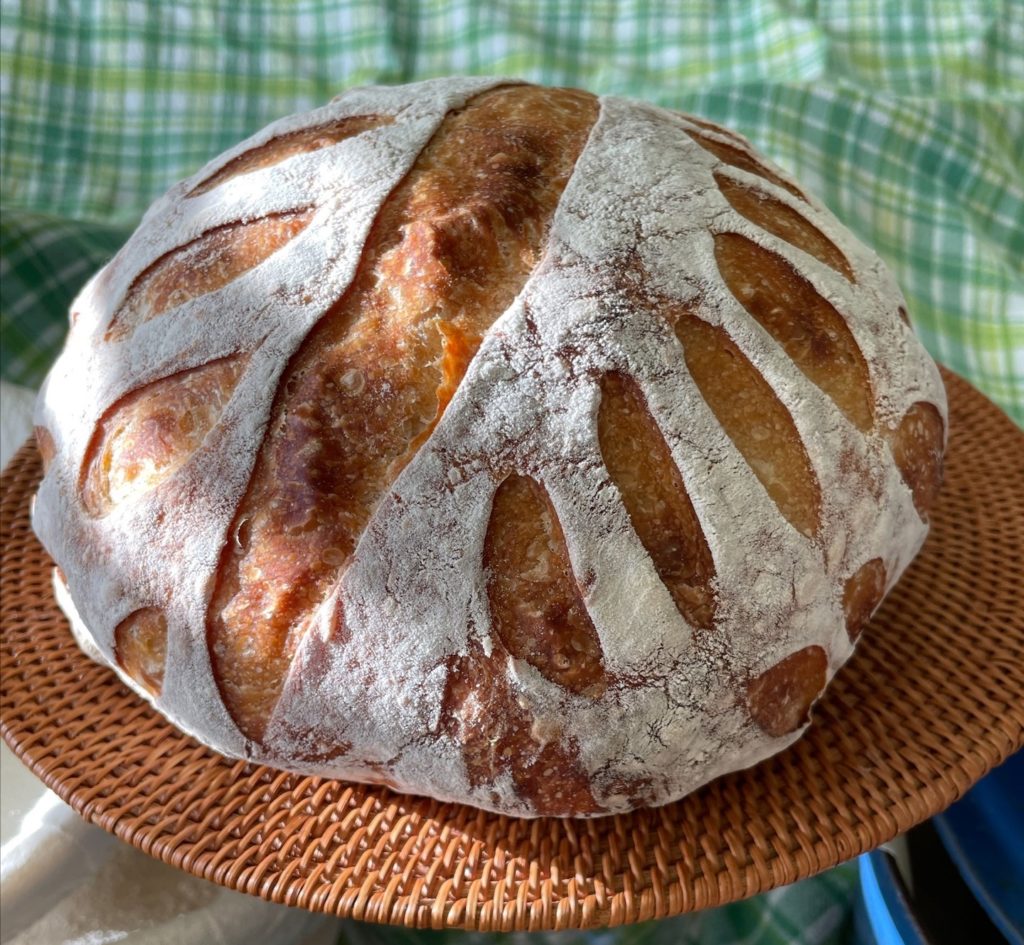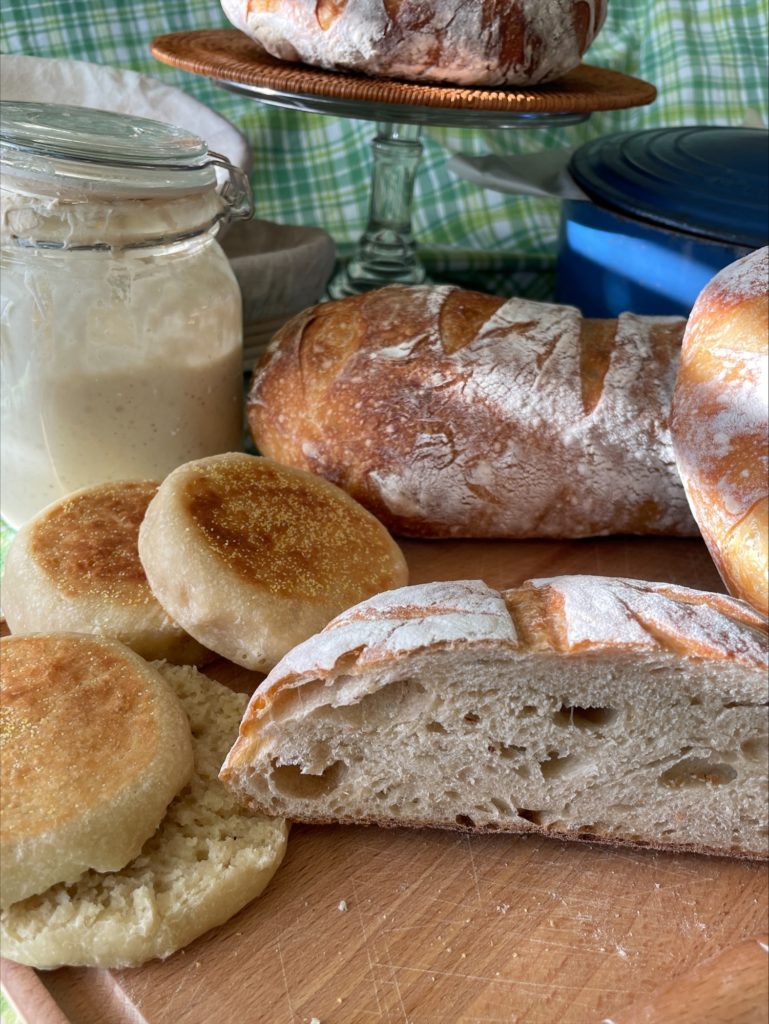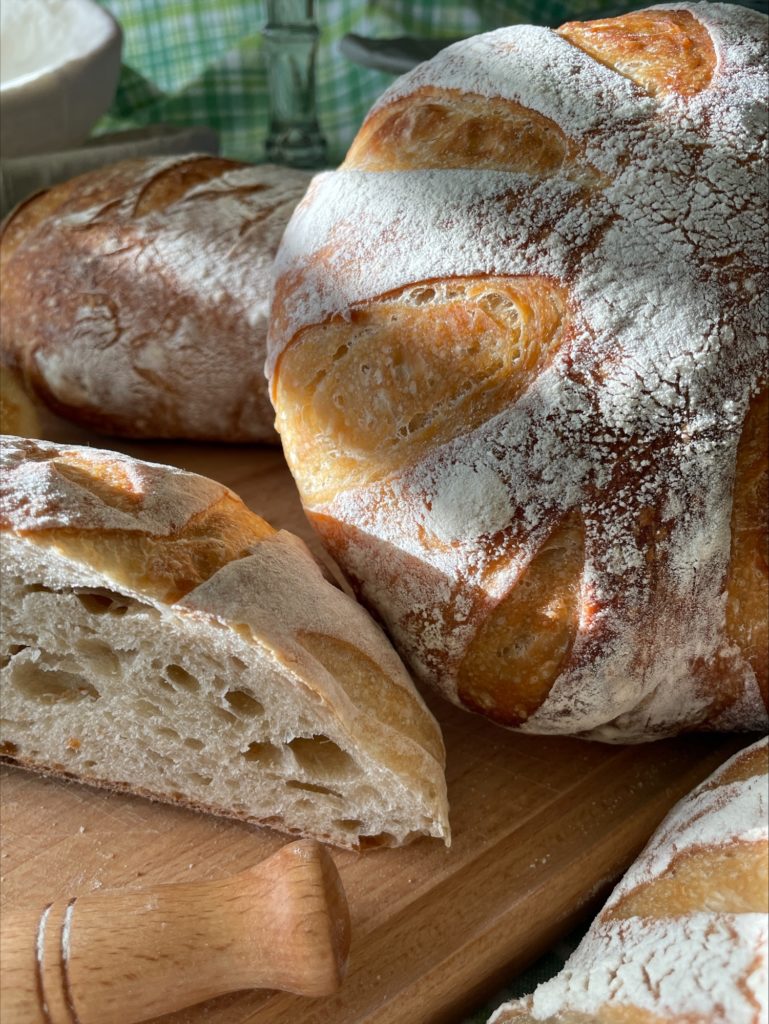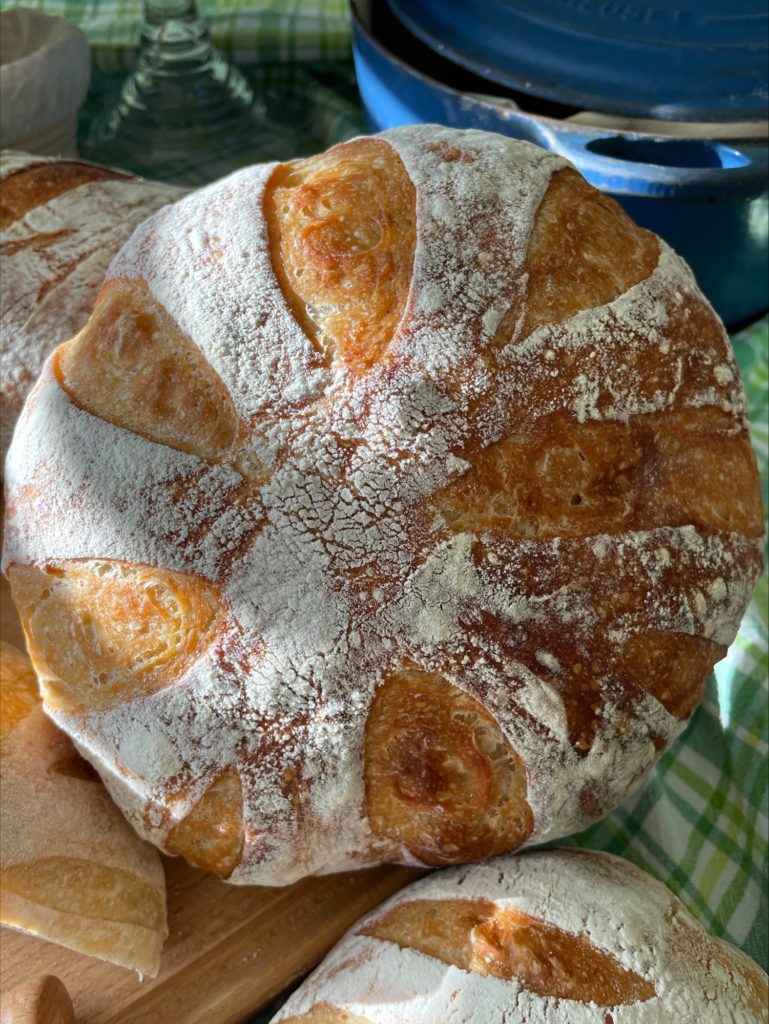
For bread lovers, it doesn’t get much better than a delicious loaf of hand-crafted sourdough bread. The open moist structure, complex tangy flavor, and chewy crust is a combination that makes bakers’ mouths water. This is not the bread to make if you’re in a hurry. The most important ingredient in sourdough is TIME.
But if you have the time, and the patience, you are richly rewarded. And the good news is that between the different steps, you’re free to do other things. But it does take time management.
I’m still a newbie to the sourdough world and instead of sharing specific recipes, I’ll share an intro to the basics and links to where you can start your own sourdough journey.

The recipes and method I’ve been following come from Artisan Sourdough Made Simple by Emilie Raffa. If you don’t get this book for your birthday like I did, you can find your own copy here. If you really want to get into the details, Nancy Silverton is a superb baker with many cookbooks to her credit.
Instead of yeast, sourdough uses a starter, a mixture of flour and water that naturally ferments over time. There are many ways to make your own starter and it can take a month before it’s ready to use. (You can watch an old video where Nancy Silverton teaches Julia Child about how to make a starter on youtube.)
A short cut is to buy starter or a starter kit from a specialty store or online. Better yet is to get some ready-to-use starter from a friend. That’s what I did.
Tradition says to give your starter a name. I named mine Laurel, because she came from a generous artisan baker from the nearby Appalachian Mountains. And just like any living thing, you have to feed it properly. Otherwise, your starter will get weak and useless and eventually die. But take care of your starter, and it will last for years. Some bakers are using starters that have been active for over 100 years!
There’s a rhythm to feeding your starter, depending on when you need it to be at its best for baking. But in simple terms, you add a certain amount of flour and water (usually a 1:1:1 ratio based on the weight of your starter).
The hardest part of feeding is that first, you discard some of the starter you already have. If you never discarded extra, in a very short time you’d have gallons of it. And most bread recipes only need a 1/2 cup or less.

But there are plenty of recipes for the discarded starter, like English muffins or sourdough pancakes. And if you don’t have the time or need for extra carbs, don’t feel guilty if the discard goes down the drain. It’s just a part of the sourdough journey. You can put your starter to “sleep” by parking it in the refrigerator, if you’re away from home or just busy. A few days of room temperature and regular feeding will wake your starter up.
I only feed my starter unbleached all purpose flour and filtered water. You can use bread flour, but it’s more expensive and unbleached AP works just as well. Laurel’s home is a large jar with a glass clamp lid that stays on my counter and I leave partially open, so the gases she makes can escape without building up pressure.

Several tools will come in handy for making your own sourdough. A scale makes measuring flour and water easier and more accurate than traditional cups. Proofing baskets help form the loaves. A razor blade or lame are for scoring the proofed loaves, not just making the bread beautiful but helping it achieve maximum rise as it bakes. A Dutch oven lined with parchment paper is a great way to trap steam for baking and develop a chewy crust.
Most sourdough recipes call for bread flour, which has more protein and creates a better structure than all purpose flour. Even though bread flour is a little more expensive, sourdough doesn’t cost a bundle to make. Basic loaves are just water, starter, flour and salt.
And you don’t have to stick with “plain” loaves. There are many recipes that use other flours and grains, ones with dried fruit, nuts, cheese, herbs, olives, chocolate, etc., and even gluten free options.

I hope I’ve whetted your appetite to give sourdough a try yourself. And if you don’t have time for the journey, at least you’ll appreciate the effort that went into those loaves you find at your local farmer’s market. The best things take TIME.




